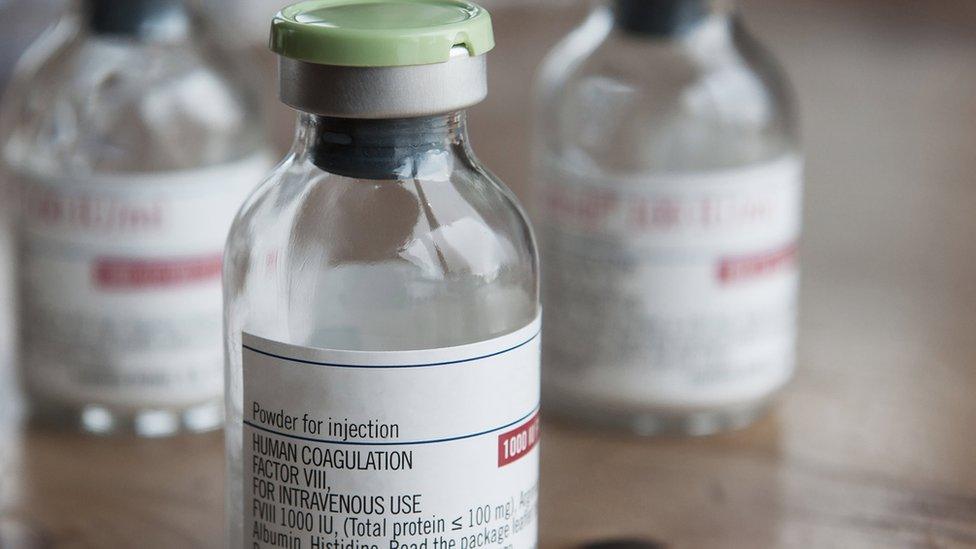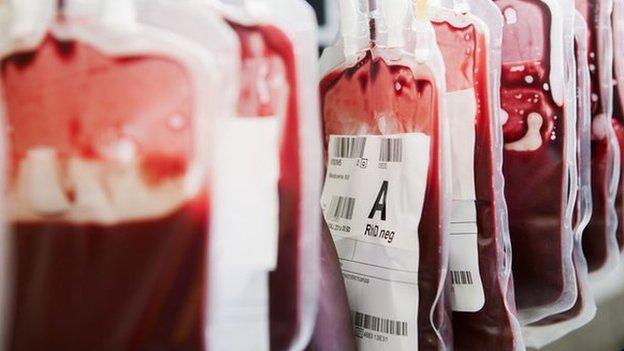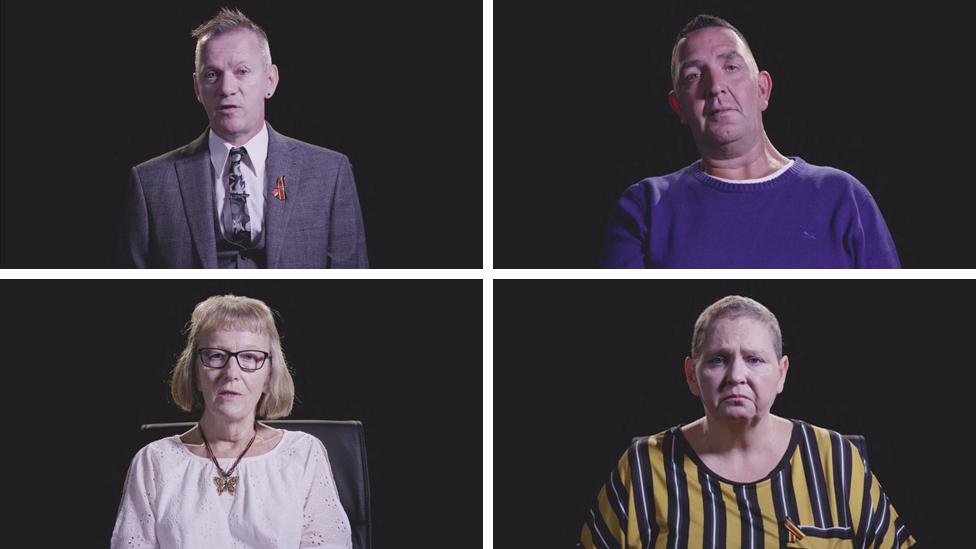Contaminated blood scandal: Where does the UK's blood supply come from?
- Published

The UK government has apologised to victims of a scandal that involved thousands being infected with HIV and hepatitis viruses from blood products imported from the US in the 1970s and 1980s.
It has become known as the contaminated blood scandal.
The patients in question, most of whom had haemophilia - a blood disorder caused by a lack of clotting agents in the blood - were actually infected with a product derived from blood called Factor 8.
It is one of the proteins found in plasma (the clear liquid making up most of our blood's volume) which is involved in clotting.
So where does the UK source its blood components from currently and how are they screened?
Imported plasma
All four UK nations, each of which has its own dedicated blood and transplant service, are self-sufficient when it comes to the supply of whole blood.
This means patients who have experienced blood loss - through surgery, an accident or childbirth for example - receive transfusions from UK donors.
But some patients are given blood components, for example platelets, or plasma. And some plasma is still imported from overseas.
The NHS Blood and Transplant Service in England says it imports about 10% of its plasma supply from Austria and Poland. Some of this is then imported from England by other UK nations.
Northern Ireland also on rare occasions imports platelets from Ireland, for clinically urgent cases.
The UK imports plasma to treat people born after 1 January 1996 as part of measures that were brought in to prevent the spread of CJD - a disease caused by consuming meat infected with BSE or "mad cow disease".
It was considered that people born after that time would not have been exposed to the disease through the food supply chain and so extra precautions should be taken to prevent them being exposed through blood products.
Those born before that time who require plasma will be treated with UK donations.
Now, blood components are only imported from countries which have equivalent safety regulations and a lower risk of its donor population carrying CJD than the UK population.
The NHS Blood and Transplant Service in England says: "Plasma from Austria and Poland is collected from voluntary non-remunerated donors who are subject to the donor selection criteria in EU law. These are the same guidelines as NHSBT."
And all blood components are screened for hepatitis viruses, syphilis and HIV among others.
Haemophiliacs are generally treated with synthetic clotting factors.
Plasma can be frozen and stored for up to three years, while red blood cells can be stored for 35 days and platelets for only seven.
"I hope I'm still alive when this ends"

Who can give blood?
People aged 17 to 70 and weighing between 7st 9lbs and 25st (50 to 160kg) who are generally fit and healthy can give blood. Pregnant women cannot give blood.
You can never give blood if you
are HIV positive
are carrying the hepatitis B, C or HTL viruses
have had syphilis
have ever injected or been injected with non-prescription drugs including body-building drugs and tanning agents
have had a blood transfusion or been given blood products since 1 January 1980
The following people have restrictions on whether they can give blood:
people who have worked as a sex worker in the past three months
men who have had sex with men, external in the past three months, even with protection
people who have had tattoos or piercings in the past four months
people who have travelled to certain countries (the waiting period depends on the country travelled to)



- Published26 September 2018

- Published24 September 2018
